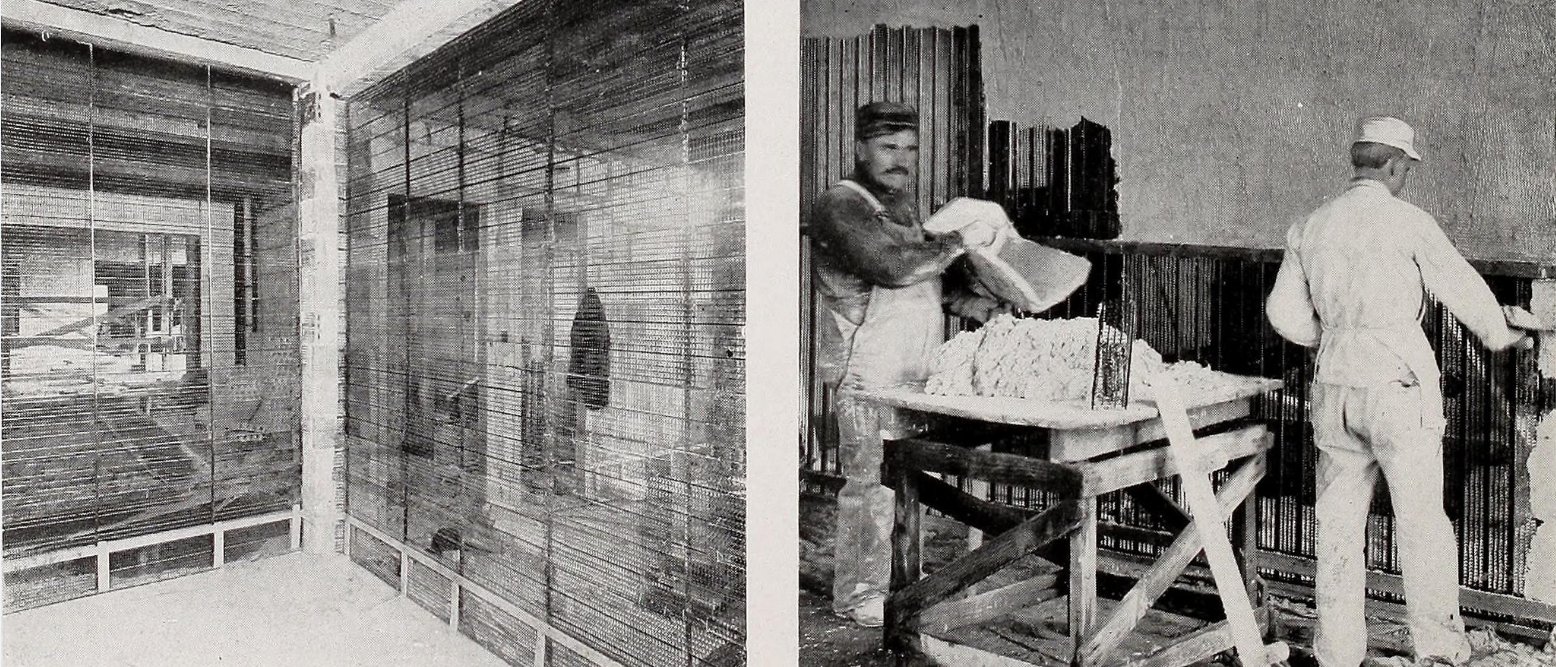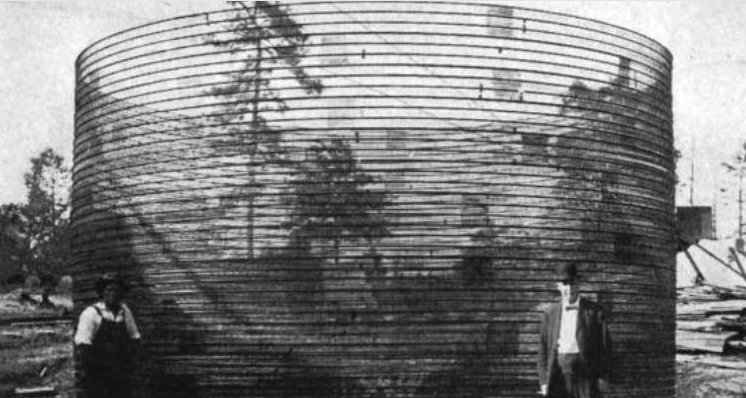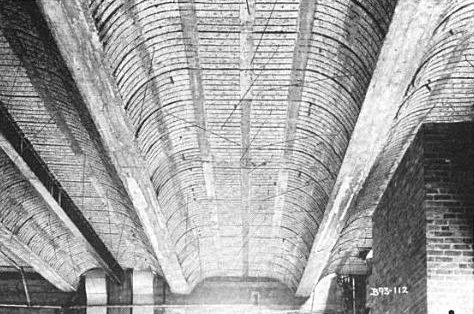Hy-Rib Metal Lath Siding on:
[Wikipedia]
[Google]
[Amazon]


 Hy-Rib was a brand name for a product manufactured by the
Hy-Rib was a brand name for a product manufactured by the
File:Four types of Hy-Rib.jpg, Four types of Hy-Rib
File:Hy-Rib products.jpg, Hy-Rib ''lath'' and ''studs''
File:Hy-Rib steel sheathing.jpg, Hy-Rib steel sheathing
File:Hy-Rib depths.jpg, Hy-Rib depths
File:Hy-Rib sheets.jpg, Hy-Rib sheets
Video on "Engineering Industrial Architecture: Albert Kahn and the Trussed Concrete Steel Company"
Michigan Historical Collections, Bentley Historical Library, University of Michigan, Albert Kahn Papers, 1896–2011
{{DEFAULTSORT:Hy-Rib Composite materials Concrete Structural engineering


 Hy-Rib was a brand name for a product manufactured by the
Hy-Rib was a brand name for a product manufactured by the Trussed Concrete Steel Company
The Trussed Concrete Steel Company was founded in 1903 by Julius Kahn, an engineer and inventor. Its headquarters were in Detroit, Michigan, and its steel factory was in Youngstown, Ohio. The long company name changed to a shortened versio ...
. It is an engineering reinforcement system for floors, walls, and ceilings of buildings and houses. This product is a derivative of the Kahn Trussed Bar for beams and columns that was invented by Julius Kahn Julius Kahn may refer to:
*Julius Kahn (inventor) (1874–1942), engineer of reinforced concrete
*Julius Kahn (congressman)
Julius Kahn (February 28, 1861 – December 18, 1924) was a United States Congressman who was succeeded by his wife ...
. Kahn engineered the Hy-Rib products and they were first manufactured in 1908.
Hy-Rib is a steel encasement stiffened by rigid ribs used in reinforced walls, ceilings, and floors. They are helical hooping units of steel sheathing forms used in concrete, stucco and plaster. Hy-Rib products are a derivative of the "wings" used in the patented Kahn System of reinforced concrete, invented by Julius Kahn in 1903. The products are made from a single plate of steel. Hy-Rib products were used in concrete doors, ceilings, and roofs. It was also used in sidings, partitions and ceilings to eliminate channels. Hy-Rib products were designed to take on plaster and cement to eliminate layout forms in the construction of buildings. The steel sheet form would be embedded with plaster or cement directly and would flow into the lath surface to attach itself to the steel and harden to secure the material into the steel.
Description and application
Hy-Rib products came in steel sheathing forms that could be bent, cut and connected together to make various size floors, walls, and ceilings. They were designed with the idea to reduce weight as compared to wood structures of the same building size. The steel forms of sheathing were stiffened by rigid high ribs and a complete unit was made with a single sheet of steel. This technique increased floor space because it cut down on center posts that were normally used in wood structured buildings. The Hy-Rib reinforced concrete floors, ceilings and walls were fireproof, being a major safety factor over wooden structures. The Packard automobile factory plant building number 10 is a demonstration of Hy-Rib product application of this reinforced concrete technique. This was the first time reinforced concrete products were used for automobile factory construction. Hy-Rib products are used in the construction of tunnels, conduits, flumes,culvert
A culvert is a structure that channels water past an obstacle or to a subterranean waterway. Typically embedded so as to be surrounded by soil, a culvert may be made from a pipe, reinforced concrete or other material. In the United Kingdom ...
s, silo
A silo (from the Greek σιρός – ''siros'', "pit for holding grain") is a structure for storing bulk materials. Silos are used in agriculture to store fermented feed known as silage, not to be confused with a grain bin, which is used t ...
s, cistern
A cistern (Middle English ', from Latin ', from ', "box", from Greek ', "basket") is a waterproof receptacle for holding liquids, usually water. Cisterns are often built to catch and store rainwater. Cisterns are distinguished from wells by t ...
s, chimney
A chimney is an architectural ventilation structure made of masonry, clay or metal that isolates hot toxic exhaust gases or smoke produced by a boiler, stove, furnace, incinerator, or fireplace from human living areas. Chimneys are typic ...
s, and water tank
A water tank is a container for storing water.
Water tanks are used to provide storage of water for use in many applications, drinking water, irrigation agriculture, fire suppression, agricultural farming, both for plants and livestock, chemi ...
s. For these applications the lath sheet products come in curved steel sheets. They are locked together to form a complete tube or tunnel on site. The curved sheets are stood on edge in the case of silos, water tanks, cisterns, and chimneys. The connected form then is plastered with cement. In some cases a few steel rods are added for extra strength and connecting purposes.
Hy-Rib products are used in flooring due to its ability to interlock prefabricated pieces. It has plaster applied to the underside creating the ceiling. The top would have wet cement poured on it to form the floor above. If the floor were required to carry heavy loads the Hy-Rib sheathing material could be bent into an arch to provide additional strength and then wet cement could poured as usual on top to make a floor.
Product
See also
*Julius Kahn Julius Kahn may refer to:
*Julius Kahn (inventor) (1874–1942), engineer of reinforced concrete
*Julius Kahn (congressman)
Julius Kahn (February 28, 1861 – December 18, 1924) was a United States Congressman who was succeeded by his wife ...
* Kahn System
* Truscon Laboratories
Truscon Laboratories was a research and development chemical laboratory of the Trussed Concrete Steel Company ("Truscon") of Detroit, Michigan. It made waterproofing liquid chemical products that went into or on cement and plaster. The products ...
* Albert Kahn Associates
* Trussed Concrete Steel Company
The Trussed Concrete Steel Company was founded in 1903 by Julius Kahn, an engineer and inventor. Its headquarters were in Detroit, Michigan, and its steel factory was in Youngstown, Ohio. The long company name changed to a shortened versio ...
References
Bibliography
* * * *External links
Video on "Engineering Industrial Architecture: Albert Kahn and the Trussed Concrete Steel Company"
Michigan Historical Collections, Bentley Historical Library, University of Michigan, Albert Kahn Papers, 1896–2011
{{DEFAULTSORT:Hy-Rib Composite materials Concrete Structural engineering